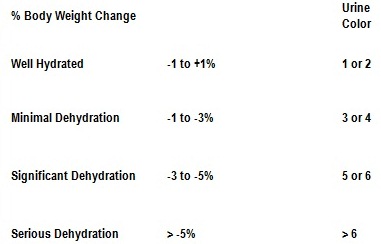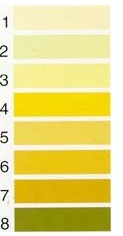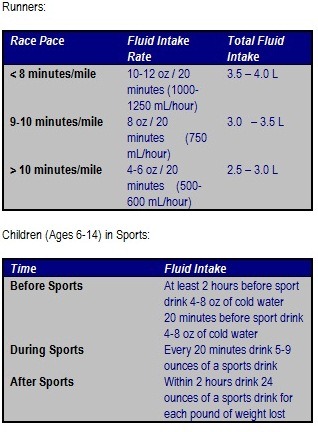Water is the most essential component of the human body as it provides an important role in the function of cells within the body. Water regulates and maintains body temperature, maintains blood circulation and pressure, lubricates joints and body tissues, and facilitates digestion.
Water Loss
Water needs to be consumed to replace the amount lost each day during your daily activities. Exercise produces an elevation in body temperature, which depends on the intensity and duration of exercise, environmental conditions, clothing worn, and metabolic rate (how many calories you burn during normal conditions). In order to get rid of the excess heat your body produces, your body secretes sweat which is primarily composed of water and electrolytes, such as sodium. The evaporation of sweat is the primary mechanism of heat loss during exercise.
The amount of sweat you lose depends on a variety of factors, like:
- Exercise intensity and duration
- Environment
- Clothing
- Body weight
- Genetics
- Acclimation to the heat
Exercise can lead to substantial water and electrolyte loss from sweat leading to dehydration and hyponatremia (low sodium in the blood). However, considerable variability exists from person to person with regards to sweat loss. Therefore, the fluid and electrolyte requirements needed for the athlete is variable from person to person as well. If water and electrolytes are not replaced from these losses, the athlete will have a decrease in performance and perhaps an adverse effect on their overall health.
Demographics of Sweat
Women generally have a lower sweating rate compared to men. Also, children have lower sweating rates compared to adults. Older adults usually have a decreased ability to voluntarily reestablish normal hydration. If given enough time and access to fluid and sodium (salts), older people will be able to maintain their fluid needs. Eating regularly will also help you maintain proper hydration and electrolytes, which are needed for athletic performance.
Fluid Balance
Thirst is a signal that your body is headed toward dehydration. Therefore, it is important to drink before you feel thirsty and to drink throughout the day. One of the best ways to check your hydration level is to monitor your body weight and urine. Thirst is not a good indicator of hydration and should not be used to monitor hydration status.

One way to check your hydration status is to weigh yourself before and after exercise. The before exercise measurement is best as a nude weight first thing in the morning after urinating. Comparing your body weight before and after exercise can be used to estimate your sweat loss and, therefore, your fluid requirements. Any weight loss is likely from fluid loss, so drinking enough to replenish these losses will maintain hydration. The table (right) shows us that over a 1% loss in body weight indicates dehydration and over 5% indicated serious dehydration. These fluid losses need to be replaced.
 Another way to check hydration status is the urine color test (left). A large amount of light-colored urine means you are well hydrated. The more concentrated the urine, or the darker the color, the more dehydrated you are.
Another way to check hydration status is the urine color test (left). A large amount of light-colored urine means you are well hydrated. The more concentrated the urine, or the darker the color, the more dehydrated you are.
Dehydration
Dehydration is the loss of fluids and salts essential to maintain normal body function. Dehydration occurs when the body loses more fluids than it takes in. Maintaining an adequate supply of water in the body is essential to athletic performance. In general, the more dehydrated you are the greater the decrease in athletic performance. Dehydration can lead to:
- Muscle fatigue
- Loss of coordination
- Inability to regulate body temperature
- Heat illness (eg. Cramps, heat exhaustion, heat stroke)
- Decreased energy and athletic performance
Causes of dehydration include:
- Inadequate fluid intake
- Excessive sweating
- Exercising in dry, hot weather
- Drinking only when thirsty
- Illness
- Medications (eg. Diuretics)
- Alcohol consumption
Recent evidence suggests moderate caffeine intake does not affect hydration status or urine output. However, alcohol will increase your urine output and decrease hydration.
Enhancing palatability of a fluid will help to encourage fluid consumption. This can be done with proper flavoring, proper salt (sodium) content, and drinking a cold beverage (15-21 Celsius).
Sports Beverages
Carbohydrates within a sports beverage help to replenish your sugar (glycogen) stores and electrolytes help to accelerate rehydration. Sports beverages should generally contain 5-10% carbohydrate, 20-30 meq/L of sodium, and 2-5 meq/L of potassium. The need for carbohydrates and electrolytes within sports beverages increase with prolonged activity and hot weather.
Carbohydrate consumption helps to sustain and improve exercise performance during high intensity exercise longer than one hour as well as less intensity exercise for longer periods. In general to maintain proper carbohydrate intake, you should ingest one-half to one liter of a sports drink each hour along with proper water intake to maintain hydration. Also, sports drinks should not exceed a carbohydrate concentration of 8% because highly concentrated beverages can reduce gastric emptying, which can cause abdominal pain and cramping.
People that exercise must drink before, during, and after exercise to prevent dehydration.
Hydration Guidelines Before Exercise
The first step is to check your hydration status before exercise because there is a wide variability in fluid needs for each person. This is done by checking your body weight and color of urine (1-2 indicates good hydration status).
- Drink 16-20 fl oz of water or sports beverage at least 4 hours before exercise
- Drink 8-12 fl oz of water 10-15 minutes before exercise
Consuming a beverage with sodium (salt) and/or small meal helps to stimulate thirst and retain fluids.
Hydration Guidelines During Exercise
- Drink 3-8 fl oz of water every 15-20 minutes when exercising for less than 60 minutes
- Drink 3-8 fl oz of a sports beverage (5-8% carbohydrate with electrolytes) every 15-20 min when exercising greater than 60 minutes
Do not drink more than 1 quart/hour (approximately 34 ounces/hour) during exercise.
Hydration Guidelines After Exercise
Obtain your body weight and check your urine to estimate your fluid losses. The goal is to correct your losses within two hours after exercise.
- Drink 20-24 fl oz of water or sports beverage for every 1 pound lost
How to Calculate your personal fluid needs
You should follow the ACSM guidelines for fluid replacement outlined in this handout, however, if you want more specific calculations of body fluid losses as a general strategy for fluid replacement, calculate your sweat rate as follows:
- Weigh nude before your workout
- Exercise at a pace you would use during competition for one hour
- Track fluid intake during the exercise and measure in ounces
- Record nude weight after exercise and subtract this from your starting weight. Then convert the difference in body weight to ounces
Custom Fluid Replacement Program



